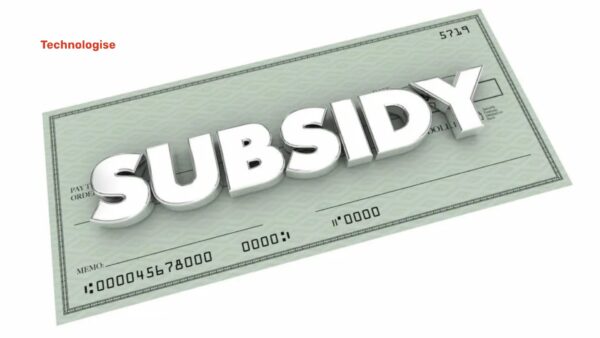Subsidies and Their Impact on the Economy: Advantages and Disadvantages

Subsidy
Subsidies are a form of financial assistance provided by the government to reduce the cost of services or products, making them more accessible. Whether aimed at boosting industries, supporting consumers, or promoting specific goals like renewable energy adoption, subsidies play a significant role in shaping economies. However, they come with both advantages and disadvantages that affect various stakeholders differently. Let’s explore their effects in greater detail.
Advantages of Subsidies on the Economy
Promoting Economic Growth
Subsidies often serve as a catalyst for economic expansion. By lowering production costs for businesses, they encourage increased output and make products more affordable for consumers. For instance, subsidies on essential raw materials can lead to lower retail prices, stimulating demand and fostering market activity. They are particularly vital in sectors like agriculture and manufacturing, where the added support can lead to significant growth.
Improving Access to Essentials
Subsidies are frequently introduced to make fundamental needs like food, healthcare, and education accessible to everyone. By reducing the cost of these essentials, subsidies directly benefit underprivileged groups, ensuring they have a safety net in place to improve their quality of life.
Boosting Employment and Innovation
By supporting industries and encouraging expansion, subsidies contribute to job creation and spur innovation. Lower operational costs allow companies to hire more workers and invest in research and development, leading to advancements that benefit the economy as a whole.
Encouraging Environmental Sustainability
Targeted subsidies for renewable energy and eco-friendly technologies help accelerate the shift away from polluting practices. These initiatives not only combat climate change but also pave the way for new industries, generating green jobs and fostering sustainable economic growth.
Disadvantages of Subsidies on the Economy
Distorting Market Dynamics
Subsidies can disrupt the natural supply-and-demand balance. Overproduction of subsidized goods can lead to price crashes, wastage, and inefficiencies. For example, excessive production of a crop due to agricultural subsidies can oversaturate the market, driving down prices and creating wasteful practices.
Straining Government Finances
Funding subsidies requires substantial government spending, which can divert resources away from critical areas like healthcare, infrastructure, and education. Over time, this can lead to increased taxes or public debt, slowing overall economic growth.
Widening Inequalities
Ironically, subsidies can sometimes benefit wealthier individuals or large corporations more than those in need. Energy subsidies, for instance, often provide greater advantages to high-energy consumers rather than supporting low-income households.
Environmental Harm
Certain subsidies, like those for fossil fuels or chemical-intensive farming, can contribute to environmental degradation. Supporting practices that harm soil, water, and air quality contradicts long-term sustainability goals.
Creating Dependency
Industries that rely heavily on subsidies may become complacent, neglecting innovation and efficiency improvements. This dependency can make them less competitive globally and stifle overall progress.
Complexity and Inefficiency
Designing and managing subsidy programs is a significant challenge. Ensuring funds reach the intended recipients while minimizing corruption and inefficiencies requires meticulous planning and oversight. Mismanagement can result in wasted resources and missed objectives.
Conclusion
Subsidies are a double-edged sword, offering significant advantages while posing notable challenges. Whether they benefit the economy depends on their design, implementation, and monitoring. By carefully managing subsidies, governments can maximize their positive impact while minimizing unintended consequences.
FAQs about Subsidies
What are subsidies, and why are they important?
Subsidies are financial aids provided by the government to reduce costs for businesses or consumers. They are important for achieving economic goals like supporting struggling sectors, improving access to essential goods and services, and promoting environmental sustainability.
How do subsidies promote economic growth?
By lowering production costs, subsidies enable businesses to increase output and reduce prices for consumers. This boosts demand and drives economic activity, particularly in key sectors like agriculture, manufacturing, and renewable energy.
What are the major drawbacks of subsidies?
Subsidies can distort market dynamics, strain government finances, and sometimes benefit the wealthy more than the needy. They may also harm the environment, create dependency among industries, and be challenging to implement effectively.
How do subsidies affect innovation and employment?
Subsidies can encourage businesses to invest in new technologies and expand operations, leading to job creation and innovation. However, over-reliance on subsidies might reduce the incentive for industries to innovate independently.
Are subsidies always beneficial for the environment?
Not always. While green subsidies promote sustainable practices, others—like fossil fuel subsidies—can exacerbate pollution and climate change. Their environmental impact depends on the specific goals and design of the subsidy program.





